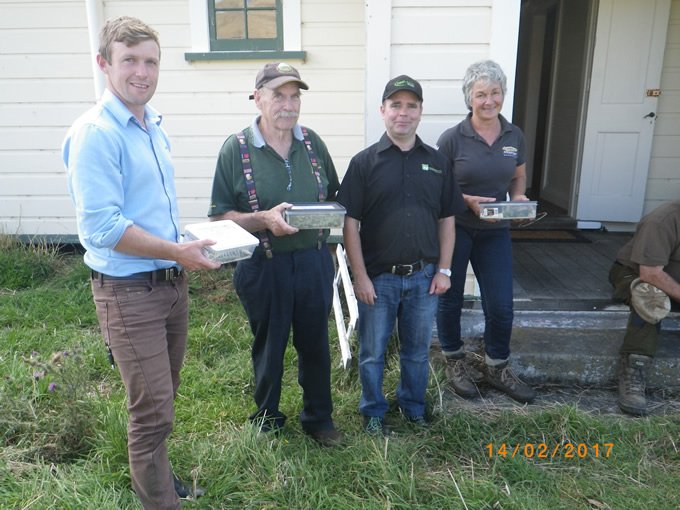How effective is the green thistle beetle?
Since its release in 2007, the green thistle beetle (Cassida rubiginosa) has been starting to make good progress towards reducing Californian thistle (Cirsium arvense) populations in many areas. It has also been making a good impression on the farmers who have been nurturing them. The beetle was first introduced by the lower South Island-based Californian Thistle Action Group, with the support of Manaaki Whenua – Landcare Research, with funding provided by the Sustainable Farming Fund (SFF). In 2014 another SFF project, co-funded by Beef + Lamb New Zealand, enabled the original project to expand. “The beetle has established in many areas of New Zealand, but a more concerted effort has been made recently to establish the beetle on high-country sheep and beef farms, where other control options are limited by the terrain,” said AgResearch scientist Mike Cripps, who has been leading the SFF project.
“The grant has also enabled better dialogue with the farming community, and, importantly, has provided us with the capacity to collect quantitative data on the beetle’s impact,” Mike said. The farming community have been able to see first-hand the feeding damage on Californian thistle. “Each year of the project we established cages on three farms in Canterbury and three in the Manawatū, which each started with 50 beetles. This enabled the farmers to see for themselves what impact the beetles could have on the thistle population,” said Mike. The defoliation rates were higher than expected from an initial population of 50 beetles, indicating good beetle reproduction, which is a prerequisite for successful establishment.

“Despite getting good reports back from the farming community, we were lacking robust data to evaluate their impact,” explained Mike. “To remedy this, we have been testing the impact of beetle damage at a property in Scargill, North Canterbury, since 2015. We specifically looked at damage to the above-ground vegetation to see what effect that has on the plant in the following growing season,” Mike said. The experimental areas were established with variable numbers of beetles. Either 5, 10, or 20 larvae per shoot were introduced, and the results compared with a control group where no beetle larvae were applied. This was replicated four times.
“Although results differed between years, overall it seems that the percentage of foliage damage was significantly greater in all beetle treatment groups compared with the control group, and that densities of ≥10 larvae per shoot are required to significantly reduce the density and spread of Californian thistle,” Mike said. Shoots incurring greater feeding damage were less likely to become reproductive, but by late summer there was no longer any feeding activity by the beetle, and most of the shoots had senesced.
In the first year there was a long, dry period with lower than average rainfall. This stunted the growth of the plants, leading to fewer reproductive shoots and more pronounced effects on the thistle when the larval densities were high. “This suggested to us that rainfall is an important factor in determining the level of damage to the thistle,” Mike said, adding that “other studies have also shown that moisture stress can enhance the effectiveness of biocontrol agents.” This might also explain why the green thistle beetle has not performed well to date in the south where rainfall is higher. However, habitat factors such as the presence or absence of suitable overwintering sites for the beetle could also be involved, and further research is needed to explore this.
“Two field days were scheduled each year (one in the North Island and another in the South Island) as part of the SFF project. These were aimed at informing sheep and beef farmers about the project, as well as presenting initial results and observations from the field trial and cage release sites,” said Mike. At the recent event, AgResearch provided farmers with a pamphlet containing basic information about how to identify the beetle and how to detect damage on the thistle. “We were also able to provide green thistle beetle starter kits containing live beetles to some of the participants from hill-country farms,” added Mike.
Mike concluded by saying, “We know that thistle growth in one season directly influences growth in the following season, so it important for us to factor this into our experimental design.” Future research is likely to move the monitoring to a broader scale, looking at the influence of different grazing regimes that could alter the competitive ability of pasture, adding to the effectiveness of the green thistle beetle.
Thanks to Tom Maxwell (sheep & beef farmer, Scargill, Canterbury), for allowing the field trial to be carried out on his property, and for hosting a field day on thistle biocontrol.
Contact: Mike Cripps – mike.cripps@agresearch.co.nz
